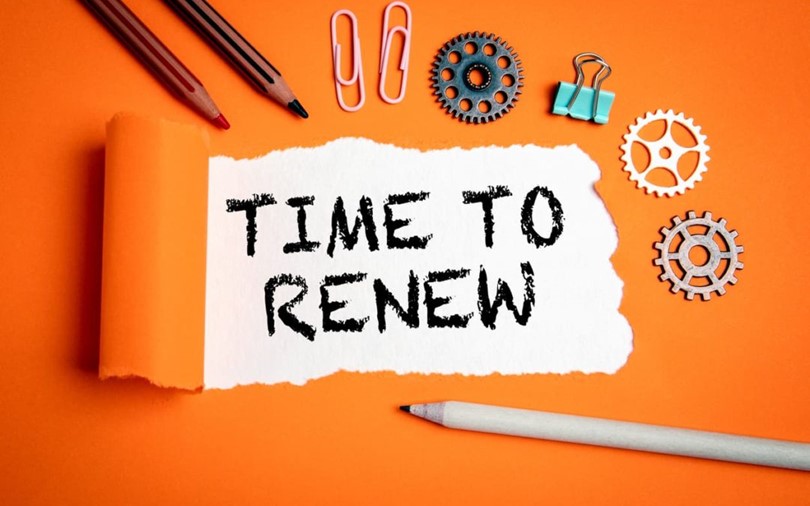
Every year, employers have to renew their health packages, and premium rates will change based on insurance carrier assessments.
Key takeaways:
- What causes increases in insurance rates? Factors like health crises (COVID-19), inflation rates and the economic climate impact fluctuating premiums
- How do insurance carriers assess percentage increases? The carrier determines the percentage based on performance factors like utilization and participation.
- How does the health insurance renewal process work with a Professional Employer Organization (PEO)?
- Insurance carrier determines renewal percentage
- PEOs negotiate on behalf of the company
- PEO clients are given the renewal, plan changes and options, and employee participation requirements
- Employers choose the plan and contribution strategy
- Employees renew their plans
- Benefits of working with a PEO: PEOs have the buying power of combined clients, ensure compliance, and navigate administrative burdens for companies
As an employer, you have to renew your health insurance package every year or look for a new plan. Insurance carriers adjust their rates annually due to a variety of performance factors like utilization and participation in the plan the year prior, on top of existing market conditions like inflation, the economic climate, changing laws and regulations, healthcare crises and more.
How do carriers create these percentage changes? How does the renewal process work for employers? Here are some key considerations, including the benefits of working with a PEO to manage health insurance renewals.
What causes insurance rates to go up?
Societal changes that impact the healthcare industry can put big strains on insurance carriers and premiums. For instance, in early 2020, the pandemic caused an estimated 7% increase in health care costs for employers. That was because of the high numbers of people getting sick and the cost of vaccines and treatments, which impacted risk, and thus health plan premiums went up.
Kaiser Family Foundation data found that the average insurance premium rose 4% from 2020 to 2021, but premiums have increased 47% since 2011, which means that rate increases have outpaced inflation and increases in wages. Deductibles have seen a 68.4% increase in the last 11 years.
The biggest factors that create rate increases have to do with plan performance. The carrier will evaluate data from the previous year, including:
- Plan utilization
- Plan participation
- The group’s overall performance
Depending on how the plan performed, how many people participated, and how many claims were submitted, rates can increase from one year to the next. Additional industry factors like those mentioned above may put additional pressure on insurance carriers to reevaluate rates.
How carriers evaluate renewal percentages
Insurance carriers require yearly renewals of plans for a few reasons. They benefit employers in that budgets and goals can be reassessed and realigned with the coverage offered. Employees can report life events, add dependents or switch plans.
Insurance carriers renew annually because they have to comply with current regulations, which may change frequently. The cost of health insurance also accounts for inflation and other economic factors that relate to the health insurance industry.
In the case of COVID-19, for example, the pandemic created a lot more risk in the health insurance industry. Insurance carriers have to assess this risk each year to determine their rates and how big of a percentage they need to increase costs from year to year.
But more impactful on carrier decisions are the factors mentioned above about plan performance. Carriers want to make sure that the rates for the plan align with the number of claims being filed, or the utilization, as well as the number of participants signing up. Evaluating this data tells them how the plan performed, and they can readjust the premium rate based on this performance information from the year prior.
How the renewal process works with a PEO
Many companies decide to work with a professional employer organization (PEO) to help them handle a range of HR responsibilities, including benefits administration.
PEOs handle plan selection to help employers meet their goals and offer the best plans possible to their employees. They manage the relationship with insurance carriers, open enrollment, employee communication, training and more.
Small businesses in particular can benefit from working with a PEO because it will give them access to plans they may not otherwise be eligible for since PEOs are treated like larger employers. Each year, when it’s time to reassess health insurance plans and go through the renewal process, PEOs help with planning, budgeting and negotiations. They help employers ensure they’re getting the best deal out there, and they provide assistance in understanding any year-over-year cost increases.
What does the renewal process look like? The health plan renewal process typically looks something like this:
- Insurance carrier determines renewal percentage
Any changes to health insurance plans will start with a reassessment by the carrier. They primarily consider performance factors for the group plan and weigh in how the coming year might look for the plan to continue. They may also factor in certain economic and healthcare conditions.
- PEOs negotiate on behalf of the employer
PEOs then review the renewal terms and act as an advocate for companies. If the new rates aren’t justifiable, they’ll start negotiations with the insurance carrier to get a better rate.
- PEO clients are given the renewal, plan changes and options, and employee participation requirements
The PEO helps explain any changes in the renewal, new or different plan options, and employee participation requirements for the year ahead.
- Employers choose the plan and contribution strategy
The employer then looks through changes and options, selects the plan to offer their employees, and comes up with the right plan for making contributions.
- Employees renew their plans
Once the PEO and employer work together to select the right plan and set up contribution amounts, it’s time to educate the workforce and start open enrollment. Employees can renew their same plan, make adjustments to their coverage or align their goals and budget with the right option.
Working with a PEO usually means that you’ll have the same renewal window each year depending on the PEO’s policy calendar. This is known as a master policy and it allows PEOs to give small businesses enterprise-level healthcare rates.
Employees need to understand that they’ll have to stay on their selected plan for the entire next year. The only changes they can make come from life changes like getting married or divorced, having a child or leaving their employer for another job.
Why work with a PEO?
PEOs provide businesses with more insight into how the health insurance industry works and how they need to comply with laws and regulations. For example, employers need to comply with legislation like the Affordable Care Act (ACA) and the Consolidated Omnibus Budget Reconciliation Act (COBRA). There are also key factors to consider when choosing between types of plans to offer, like a PPO versus an HMO.
PEOs also ensure that organizations align their budgets and goals with what they’re offering their workers, and that plans will support their employees’ well-being. PEOs can get employers better pricing and plan options, since smaller businesses wouldn’t have access to the same plans on their own. PEOs have the buying power of combined clients, so they increase their strength in numbers.
Finally, a PEO takes on a lot of the management and administrative work related to employee benefits, including the annual health insurance renewal process, open enrollment and employee education. All of these tasks take up a lot of time for employers if they try to do them on their own.
At StaffLink Outsourcing, our team is ready to help you understand your health insurance options and take on all related tasks to ensure you and your employees succeed.
Request a proposal or contact us at (954) 423-8262 for more information.




